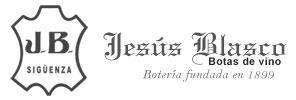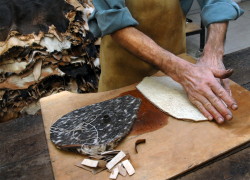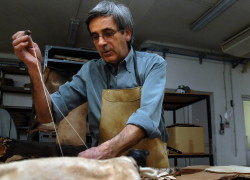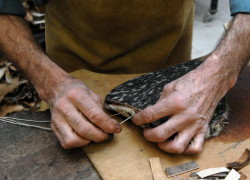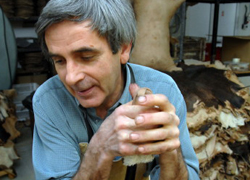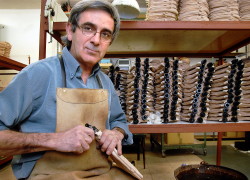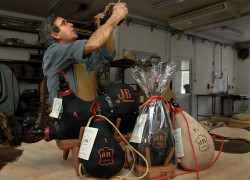The traditional method of wineskin making |
|
The skin, raw materialThe skin used in the making of the traditional wineskin is natural goat skin, obtained from farms in the area which are carefully selected. Once dried they are tanned with vegetable extracts or tannins, which is shredded bark collected from trees (mimosa, pine and oak). With the help of a pattern, the skin is cut to the shape of Bota and reversed and sealed. StitchingOnce cut it is necessary to sew the Bota. First it is tacked and stitched and the sewn with the sewing machine leaving it air tight. Once sewn, it´s turned inside out. This process requires maximum expertise of the craftsman . First you blow hard to inflate and with a flick of the wrist turn it on the rod. SealingAt this point, the wineskin will be ready for sealing on the inside. The resin, after being heated is applied to the interior and allowed to cool at which point the Bota is already waterproofed. The resin is extracted from pine or juniper trees and prepared at high temperatures by the craftsman to seal the interior of the Bota. In latex wineskins, the resin is replaced by introducing a latex bladder that performs the same function of waterproofing. Then we introduce the rim or mouth piece, by which it is be filled. FinishingFinally we check the stitching, and the impermeability of the wineskin put the cords and the wineskin is ready for use. |
